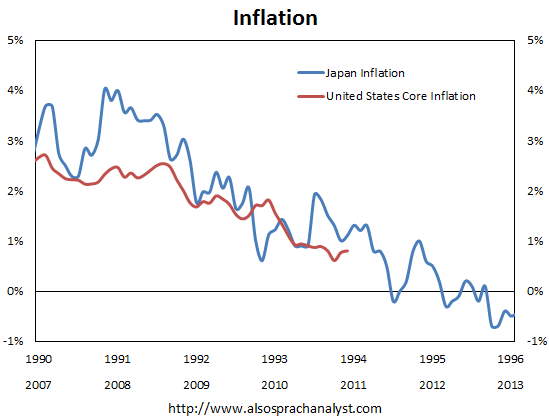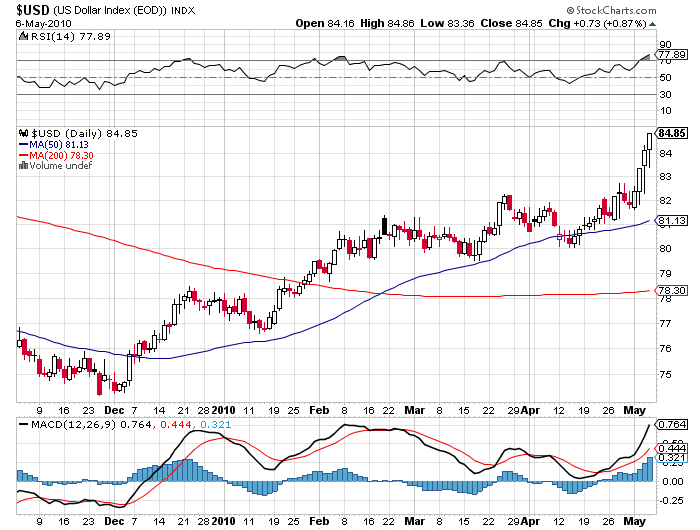Deflation What Investors Need to Know
Post on: 10 Май, 2015 No Comment

A rapid drop in inflation may help shoppers’ dollars go further, but it’s a disturbing trend for investors
Forget inflation for now. Prices are falling on almost everything, including stocks.
Investors need to adjust to a new reality: A few months ago, inflation was a top worry, especially the impact of sky-high fuel prices. Now, although consumers can celebrate falling prices at the gas pump, investors’ worry is exactly the opposite.
Instead of inflation, the problem is deflation, a downward drift in prices that could squeeze corporate profits and investor returns to uncomfortable levels.
PPI Posts Record Decline
On Nov. 18, a government report showed an unexpectedly large 1% drop in the October consumer price index, including an 8.6% plunge in energy prices last month. Excluding energy and food, the CPI fell 0.1%, the first drop in the so-called core index since 1982.
On Nov. 17, the producer price index, a measure of wholesale prices, fell 2.8% in October, including a 12.8% fall in energy prices. That was the largest decline in the PPI in the report’s 61-year history.
After a fast rise in prices in early 2008, consumer prices are still up 3.7% in the past year, though that’s down from a 4.9% annual increase in September.
Economy Facing Extreme Stress
Economists say the recent price declines do help consumers (BusinessWeek.com, 11/19/08).
However, rampant deflation is also a sign of the extreme stress the economy is under right now. Clearly, demand is down worldwide, says Brian Levitt, economist at OppenheimerFunds (OPY).
Falling prices—for everything from commodities to airline tickets to apparel—are a sign of how much economic activity has slowed. For example, consumer energy prices are off 43.1% in the past three months. In October alone, airfares dropped 4.8%, and apparel prices dropped 1%.
Deflation Can Be Destructive
In a sign of manufacturing’s weakness, John Ryding of RDQ Economics points out that scrap steel prices have fallen from a high of $523 per ton in August to $144 per ton last week.
Falling prices aren’t just a symptom of economic weakness, they’re also destructive in and of themselves. A deflation spiral is probably the biggest risk to the economy, Levitt says.
As demand declines and prices fall, companies cut employment and investment, slowing economic growth even further.
Gas Down 55.4% in Three Months
Firms are forced to cut prices further to keep business, an environment that is very challenging to corporate profits, says First American Funds Chief Economist Keith Hembre. With prices and profits falling, companies cut staff, delaying a recovery for the labor market. The U.S. unemployment rate rose from 6.1% to 6.5% in October, and many economists expect that to rise further.
According to the October CPI report, gasoline prices are down 55.4% in the last three months. Levitt says those savings to consumers far exceed the total amount of income being lost from job cuts—at least at this point.
Despite this, consumers are in no mood to spend. People are hunkering down, says Josh Feinman, chief economist at Deutsche Bank Advisors (DB). Whether businesses or households, they’re deferring spending.

Truckers Cutting Prices
Consumers, banks, businesses—worried by the economic environment—all seem to be putting cash in the bank rather than jumping at the new, bargain prices. For U.S. companies, the result of all this deflation and hoarding of cash is likely to be weak sales figures and shrinking profits.
That’s true even of firms that benefit from falling commodity prices. For example, Longbow Research analyst Lee Klaskow, who covers the trucking industry, wrote Nov. 18 that diesel prices have fallen about 41% from July. That’s good for trucking firms, but almost everything else looks bad for truckers. In a Longbow survey, about 70% of trucking companies stated that they are experiencing weaker demand year over year and that the decline is gaining some momentum, Klaskow wrote. So, truckers are making aggressive and at times irrational cuts to the prices they offer customers.
With companies under pressure from falling earnings, a weak economy, and the hoarding of cash, fewer investors are willing to buy stocks during deflationary times. It’s a tough environment for equities, Hembre says, though it is a positive for Treasury bonds. With prices falling, bond yields offer a safe return that easily beats inflation.
Inflation Will Come Back
The solution, many economists insist, is strong action by the Federal Reserve and the federal government to pump liquidity into the financial system and stimulate economic demand again. In a Nov. 19 speech, Federal Reserve Vice-Chairman Donald Kohn addressed the issue. Kohn sees the risk of deflation as small, but the economy is very weak and it’s important to be aggressive to head off any such risk, wrote Action Economics in an analysis of the speech. The government is throwing the biggest stimulus in U.S. history at the problem, Levitt says. Given the amount of the stimulus, we do believe that policy will eventually win out.
Some worry all this government money will spark inflation down the road. If that happens, central banks can pull back on the liquidity, Feinman says. But that’s not a serious worry now. With the economy so weak, inflation is not our concern, he says.
Given the threats to the economy and the global financial system, a little inflation might be a good problem to have.
Business Exchange related topics:
Recession Spending and Investing














